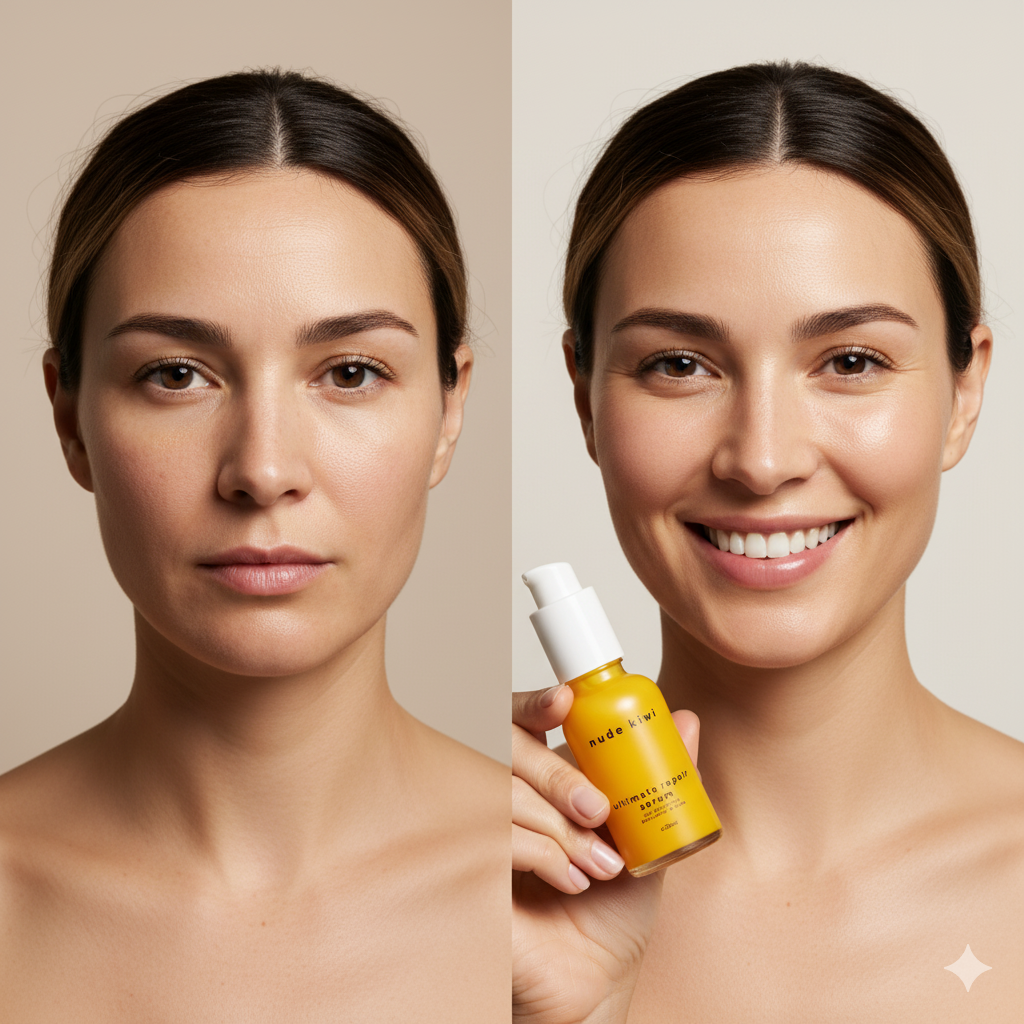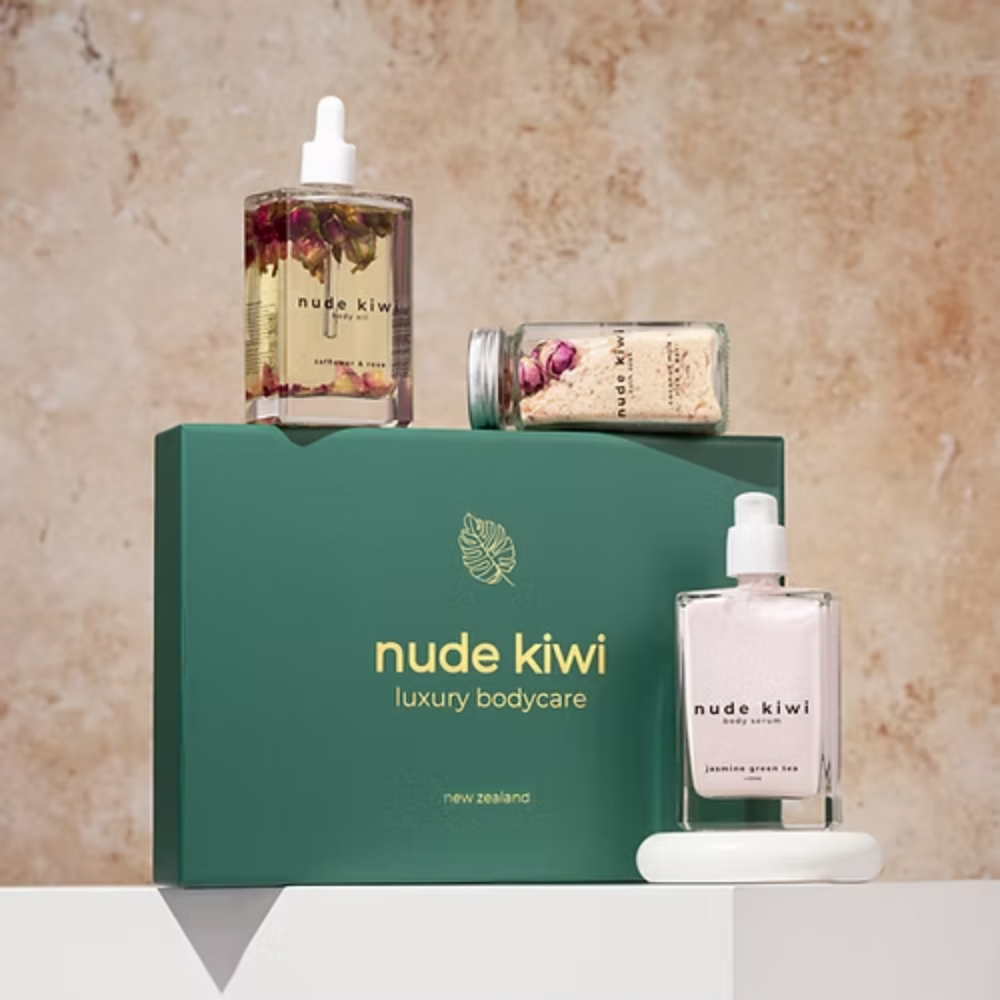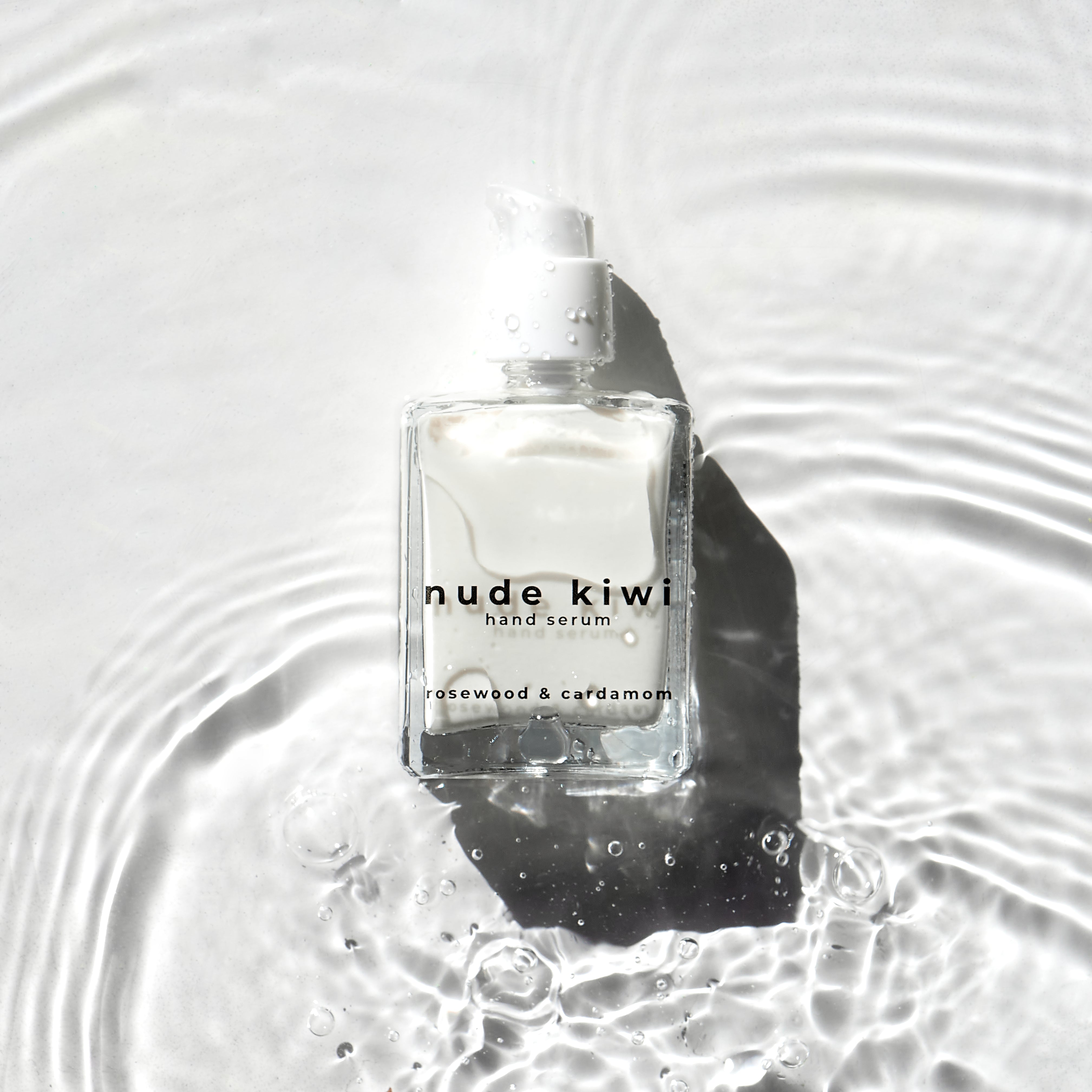
Dry Skin on Face: Causes, Treatments, and How to Get Smooth, Hydrated Skin
If you're dealing with dry skin on face, you're certainly not alone. Millions of people worldwide struggle with the uncomfortable symptoms of facial dryness - from that tight, pulling sensation after washing your face to the frustrating flakes that seem to appear no matter how much moisturizer you apply.
Dry facial skin can manifest in various ways: rough, scaly patches that feel uncomfortable to touch, persistent flaking that makes makeup application challenging, and that overall tight sensation that leaves you constantly reaching for relief. Perhaps most frustratingly, dry skin can make you look older than your years and feel self-conscious about your complexion.
The good news? Understanding the root causes of dry skin on face and implementing the right treatment approach can transform your skin from parched and uncomfortable to smooth, supple, and naturally radiant. In this comprehensive guide, we'll explore everything you need to know about facial dryness - from identifying the underlying triggers to developing an effective skincare routine that delivers lasting hydration and comfort.
What Causes Dry Skin on the Face?

Understanding why is my skin so dry begins with recognizing that facial dryness rarely has a single cause. Instead, it's typically the result of multiple factors working together to compromise your skin's natural moisture barrier.
Environmental Triggers
-
Weather Conditions: Cold, windy weather strips moisture from your skin's surface, while low humidity levels (common in winter) prevent your skin from retaining adequate hydration. Air conditioning and indoor heating systems create artificially dry environments that can leave your skin feeling parched.
-
Sun Exposure: UV radiation doesn't just cause premature aging - it also breaks down the skin's protective lipid barrier, leading to increased water loss and chronic dryness.
Skincare Habits That Backfire
-
Over-Cleansing: Washing your face more than twice daily or using harsh, stripping cleansers can remove your skin's natural protective oils faster than they can be replenished.
-
Hot Water: While it feels soothing, hot water dissolves the skin's natural lipid barrier more effectively than lukewarm water, leaving your skin vulnerable to moisture loss.
Internal Factors
-
Age-Related Changes: As we age, our skin produces less sebum (natural oil) and loses its ability to retain moisture effectively. The skin barrier becomes thinner and more permeable, allowing water to escape more easily.
-
Hormonal Fluctuations: Menopause, pregnancy, and menstrual cycles can dramatically affect skin hydration levels. Decreased estrogen levels, in particular, reduce oil production and skin thickness.
Sudden Onset Causes
If you're wondering why is my skin dry all of a sudden or why is my skin super dry all of a sudden, consider recent changes:
- New skincare products or treatments
- Medication changes
- Seasonal transitions
- Travel to different climates
- Increased stress levels Dietary changes
Identifying your specific triggers is the first step toward developing an effective treatment strategy.
Common Areas Affected: Chin, Forehead & Patches
Facial dryness rarely affects the entire face uniformly. Instead, certain areas are more prone to developing dry skin patches, dry forehead conditions, and dry skin on chin due to their unique characteristics and exposure patterns.
The Chin: A Trouble Zone for Dryness
The chin area is particularly susceptible to dryness and flaking. This area experiences frequent contact with clothing, hands, and phones, which can transfer bacteria and remove natural oils.
Common chin symptoms include:
- Persistent flaking that worsens with touching
- Rough, scaly texture that catches on fabric
- Irritation from shaving or facial hair maintenance
Forehead: Where Environmental Damage Shows First
The forehead bears the brunt of environmental exposure - sun, wind, and pollution all take their toll on this prominent area. Hair products can also migrate onto forehead skin, potentially causing irritation.
Typical forehead dryness patterns:
- Horizontal patches that correspond to expression lines
- Flaking along the hairline where products accumulate
- Rough texture that becomes more noticeable under makeup
Cheeks and Nose Area: The Delicate Zones
The skin around the nose and on the cheeks is often thinner and more sensitive than other facial areas, making them prone to dry peeling skin on face.
Common symptoms in these areas:
- Flaking around the nose, especially during cold weather
- Sensitivity and redness that worsens with certain products
- Tightness and discomfort after washing
Understanding these zone-specific patterns helps you customize your skincare routine - applying richer formulations to consistently dry areas while using lighter products where your skin maintains better moisture balance.
Signs and Symptoms of Dry Skin on the Face

Recognizing the signs of facial dryness helps you take action before minor issues become chronic problems. Dry peeling skin on face and related symptoms can range from mild discomfort to significant irritation.
Visual Indicators
-
Flaking and Peeling: The most obvious sign of dry skin is visible flaking, where small pieces of dead skin cells become loose and noticeable. This dry flaky skin on face often appears white or translucent.
-
Scaly Texture: When you run your fingers across your skin, scaly skin feels rough and uneven rather than smooth. This texture resembles fish scales, particularly noticeable in natural light.
-
Dullness: Healthy, hydrated skin has a natural luminosity. Dry skin appears lackluster and may have a grayish cast. Makeup may also appear patchy or emphasize dry areas.
Tactile Symptoms
-
Tightness: Perhaps the most common complaint is the sensation that your skin feels "too small" for your face. This tightness often intensifies after cleansing and may make facial expressions uncomfortable.
-
Rough Texture: When you touch your skin, it feels rough, bumpy, or sandpaper-like rather than smooth and supple. You might find yourself constantly touching these areas, which can worsen the condition.
-
Itching and Irritation: Dry skin often becomes itchy, leading to scratching that can further damage the skin barrier.
When Dry Skin Becomes Problematic
Impact on Daily Activities: Severe dryness can make routine activities uncomfortable. Smiling, talking, or making facial expressions may feel tight or painful. Applying makeup becomes challenging as products don't blend smoothly over dry, flaky skin.
Understanding these symptoms helps you gauge the severity of your condition and choose appropriate treatments. Mild dryness often responds quickly to routine changes, while more severe symptoms may require professional guidance.
How to Treat Dry Skin on the Face

Effective dry skin treatment requires a multi-pronged approach that addresses both immediate relief and long-term skin barrier health. The key lies in understanding how to treat dry skin on face through gentle yet effective methods.
The Foundation: Gentle Cleansing
-
Choose the Right Cleanser: Harsh, foaming cleansers strip away natural oils that dry skin desperately needs. Instead, opt for cream-based or oil-based cleansers that remove impurities while maintaining your skin's moisture barrier.
-
Temperature Matters: Hot water feels soothing but actually exacerbates dryness by dissolving natural lipids more quickly. Use lukewarm water for cleansing and limit face washing to twice daily.
-
Technique: Apply cleanser with gentle, circular motions using your fingertips rather than washcloths or brushes. Rinse thoroughly but pat (don't rub) your skin dry, leaving it slightly damp for the next step.
Immediate Hydration: The Critical Window
The 3-Minute Rule: Apply moisturizer within three minutes of cleansing while your skin is still slightly damp. This helps trap water in your skin and maximizes hydration benefits.
Layering for Maximum Benefit: For severely dry skin, consider a layered approach:
-
Hydrating serum with hyaluronic acid or glycerin
-
Treatment oils for added nourishment
-
Moisturizer to seal everything in
Key Ingredients for Dry Skin Relief
- Humectants: These ingredients draw moisture from the environment into your skin. Hyaluronic acid, glycerin, and sodium PCA are excellent choices.
- Emollients: These smooth and soften skin by filling in gaps between skin cells. Natural options include jojoba oil, squalane, and shea butter.
- Occlusives: These create a protective barrier that prevents water loss. Lighter options like dimethicone or natural waxes provide protection without greasiness.
Morning vs. Evening Routines
Morning Focus: Protection
- Gentle cleanser (if needed)
- Hydrating serum
- Lightweight moisturizer
- Broad-spectrum sunscreen
Evening Focus: Repair and Renewal
- Thorough but gentle cleansing
- Treatment serums with niacinamide or peptides
- Richer moisturizer or facial oil
- Overnight treatments for intensive repair
The key to successful dry skin treatment is consistency and patience. Start with gentle, basic products and gradually introduce more active ingredients as your skin barrier strengthens.
Seasonal Skincare: Dry Skin in Summer vs. Winter

Understanding how to take care of dry skin means recognizing that your skin's needs change dramatically with the seasons.
Winter: The Harsh Reality of Cold Weather Skincare
Understanding Winter's Impact: Cold air holds less moisture than warm air, creating an environment where your skin constantly loses water. Indoor heating systems further reduce humidity, creating a perfect storm for facial dryness.
How to Take Care of Dry Skin in Winter:
Humidity Management: Invest in a humidifier for your bedroom and main living areas. Aim for 40-50% humidity levels.
- Product Adjustments: Winter calls for richer formulations:
- Cream-based cleansers instead of gels
- Heavier moisturizers with occlusive ingredients
- Facial oils layered under or mixed with moisturizer
- Overnight masks for intensive repair
Summer: Navigating Heat and Humidity Challenges
Summer's Hidden Dry Skin Triggers: While humidity can help maintain skin moisture, summer brings its own challenges: increased sun exposure, air conditioning, chlorinated pools, and the temptation to over-cleanse.
How to Moisturize Dry Skin in Summer:
- Lightweight but Effective: Summer doesn't mean skipping moisturizer. Instead, choose:
- Gel-based or lotion formulations that absorb quickly
- Products with hyaluronic acid for weightless hydration
- Moisturizers with built-in SPF for convenience
- Hydrating mists for midday refreshers
Sun Protection Protocol:
- Apply broad-spectrum SPF 30+ daily, reapplying every two hours
- Use protective clothing and seek shade during peak hours
- Don't rely solely on SPF moisturizers - layer dedicated sunscreen
The key to successful seasonal skincare is preparation and flexibility. Start adjusting your routine before the season fully changes, and pay attention to your skin's responses rather than rigidly following calendar dates.
Natural Ways to Rejuvenate and Hydrate Dry Facial Skin

For those seeking how to rejuvenate dry skin naturally, nature provides powerful ingredients that can restore hydration and support your skin's healing processes. While you might wonder how to cure dry skin on face overnight, sustainable improvement comes from consistent use of gentle, natural approaches.
Plant-Based Powerhouses for Hydration
-
Aloe Vera: The Ultimate Soother: Fresh aloe vera gel provides immediate cooling relief and contains polysaccharides that help skin retain moisture. Its anti-inflammatory properties make it excellent for irritated, dry skin.
-
Jojoba Oil: Nature's Perfect Mimic: Technically a wax ester, jojoba oil closely resembles human sebum, making it readily absorbed without greasiness. Rich in vitamin E and antioxidants, it helps repair the skin barrier while providing long-lasting moisture.
-
Honey: Ancient Healing Wisdom: Raw honey is a natural humectant that draws moisture from the air into your skin. Its antimicrobial properties help maintain healthy skin flora while its enzymes gently remove dead skin cells.
-
Sea Buckthorn Oil: The Omega Powerhouse: This vibrant orange oil contains all four omega fatty acids, making it exceptional for barrier repair. Rich in vitamins C and E, sea buckthorn oil helps calm inflammation while deeply nourishing dry, damaged skin.
Lifestyle Factors for Natural Skin Hydration
Hydration from Within:
- Drink water consistently throughout the day
- Include water-rich foods like cucumber, watermelon, and leafy greens
- Limit dehydrating beverages like alcohol and excessive caffeine
Nutrition for Skin Health:
- Essential fatty acids from nuts, seeds, and fish support barrier function
- Antioxidant-rich foods combat environmental damage
- Vitamin C from citrus and berries supports collagen production
Sleep and Stress Management:
- Quality sleep allows for cellular repair and regeneration
- Chronic stress elevates cortisol, which can impair barrier function
- Practice stress-reduction techniques like meditation or yoga
Natural DIY Treatments
-
Weekly Hydrating Mask: Mix 2 tablespoons of raw honey with 1 teaspoon of jojoba oil and a few drops of pure aloe vera. Apply for 15-20 minutes, then rinse with lukewarm water.
-
Gentle Enzyme Exfoliation: Mash a small piece of ripe kiwifruit and mix with honey. The natural enzymes provide gentle exfoliation while honey adds moisture.
Remember that natural doesn't always mean immediately effective. Most natural treatments require 4-6 weeks of consistent use to show significant results. The benefit is that these approaches support longterm skin health.
Recommended Products: Nude Kiwi Solutions for Dry Skin

When addressing persistent facial dryness, choosing the right products can make the difference between temporary relief and lasting transformation. Nude Kiwi offers two exceptional solutions specifically formulated to target the root causes of dry, dehydrated facial skin.
Nude Kiwi Ultimate Repair Serum: Targeted Treatment
This therapeutic facial serum addresses multiple aspects of dry skin simultaneously. Unlike traditional moisturizers that primarily sit on the skin's surface, the Ultimate Repair Serum delivers active ingredients deep into the skin layers where hydration and repair occur at the cellular level.
The Power of Sea Buckthorn Oil: At the heart of this serum lies sea buckthorn oil, containing all four types of omega fatty acids, making it uniquely qualified to repair compromised skin barriers. For dry skin sufferers, this means faster healing of micro-cracks and improved moisture retention.
Advanced Natural Actives:
- Bakuchiol: Nature's gentle alternative to retinol, providing anti-aging benefits without irritation
- Niacinamide (Vitamin B3): Helps restore your skin's natural lipid barrier and reduce inflammation
- Gotu Kola Extract: Rich in compounds that help tighten and firm skin while providing antioxidant protection
Nude Kiwi Dry Skin Rescue Bundle: Complete Solution
For comprehensive dry skin treatment, the Dry Skin Rescue Bundle provides an intensive three-step routine that hydrates, restores, and deeply replenishes parched skin.
-
Recovery Concentrate Oil (30ml): This fragrance-free, hypoallergenic formula deeply hydrates and smooths rough, uneven skin while supporting skin structure. Rich in Vitamin E, C, and essential fatty acids, it boosts collagen production and promotes a healthier skin barrier. The lightweight formula is easily absorbed and ideal for sensitive skin, soothing itchy and irritated areas while reducing redness associated with conditions like eczema or dermatitis.
-
Ultimate Repair Serum (30ml): The same powerful serum detailed above, providing targeted treatment for barrier repair and hydration.
-
Overnight Repair Cream (100g): A beautifully rich night cream with flaxseed and New Zealand marine collagen. This intensive treatment works while you sleep to even skin tone, reduce dark circles and fine lines, while deeply nourishing and repairing damaged skin barriers.
How These Products Work Together
Morning Routine: Apply Ultimate Repair Serum to clean, damp skin, followed by your regular moisturizer and sunscreen.
Evening Intensive Treatment: Use Recovery Concentrate Oil first, followed by Ultimate Repair Serum, then seal everything with Overnight Repair Cream for maximum hydration and barrier repair.
The Nude Kiwi Difference:
- New Zealand Quality: Made with sustainably sourced ingredients to the highest standards
- Environmental Responsibility: Packaged in recyclable glass with minimal environmental impact
- No Harmful Additives: Free from parabens, sulfates, and synthetic fragrances
Struggling with persistent facial dryness that doesn't respond to traditional moisturizers? Transform your skin with Nude Kiwi's scientifically-formulated natural solutions. Whether you need targeted treatment with the Ultimate Repair Serum or comprehensive care with the Dry Skin Rescue Bundle, these gentle yet effective formulas combine the best of nature and science.
Ready to say goodbye to dry, uncomfortable skin? Visit nudekiwi.co.nz today and discover why thousands of New Zealanders trust Nude Kiwi for their most challenging skincare concerns. Your journey to smooth, hydrated, naturally radiant skin starts now.
Final Thoughts

Achieving smooth, hydrated facial skin isn't about finding a miracle cure - it's about understanding your skin's unique needs and providing consistent, appropriate care that supports its natural healing processes.
Key Takeaways for Success
Address Root Causes, Not Just Symptoms: Whether your dry skin stems from environmental factors, hormonal changes, or skincare habits, identifying and addressing underlying causes provides more lasting results than simply applying heavier moisturizers.
Consistency Trumps Intensity: Your skin responds better to gentle, consistent care than sporadic intensive treatments. A simple routine performed religiously will outperform an elaborate routine used occasionally.
Quality Over Quantity: Choosing products with effective, skin-compatible ingredients like those found in natural formulations often provides better results than using multiple products with synthetic additives that may cause irritation.
Patience with the Process: Skin barrier repair takes time - typically 4-6 weeks for significant improvement and up to 3 months for complete transformation. Trust the process and resist the urge to constantly change products.
Building Your Personal Success Strategy
Start Simple: Begin with the basics - gentle cleansing, appropriate moisturizing, and sun protection.
Master these fundamentals before adding specialized treatments.
Listen to Your Skin: Pay attention to how your skin responds to different products, weather changes, and lifestyle factors. Your skin will guide you toward what works and what doesn't.
Adapt as Needed: Your skin's needs change with seasons, age, hormones, and life circumstances. Stay flexible and adjust your routine accordingly.
When to Seek Professional Help
While most dry skin responds well to proper skincare and lifestyle adjustments, certain situations warrant professional evaluation:
Persistent dryness that doesn't improve after 6-8 weeks of consistent treatment
Skin that becomes increasingly sensitive or reactive
Signs of infection or conditions that may require medical treatment
Remember that healthy, hydrated skin is achievable at any age and with any skin type. The combination of understanding your skin's needs, choosing appropriate products with proven ingredients, and maintaining consistent care creates the foundation for lasting skin health.
The path to smooth, comfortable, radiant skin begins with your next skincare choice. Take action today with quality products that support your skin's natural beauty and resilience.
Ready to transform your dry skin? Visit nudekiwi.co.nz and discover New Zealand's premier natural skincare solutions designed specifically for sensitive, dry skin that deserves the very best care nature can provide.


